Home » Hunting Dogs » Population Dynamics in Purebred Dogs
Population Dynamics in Purebred Dogs
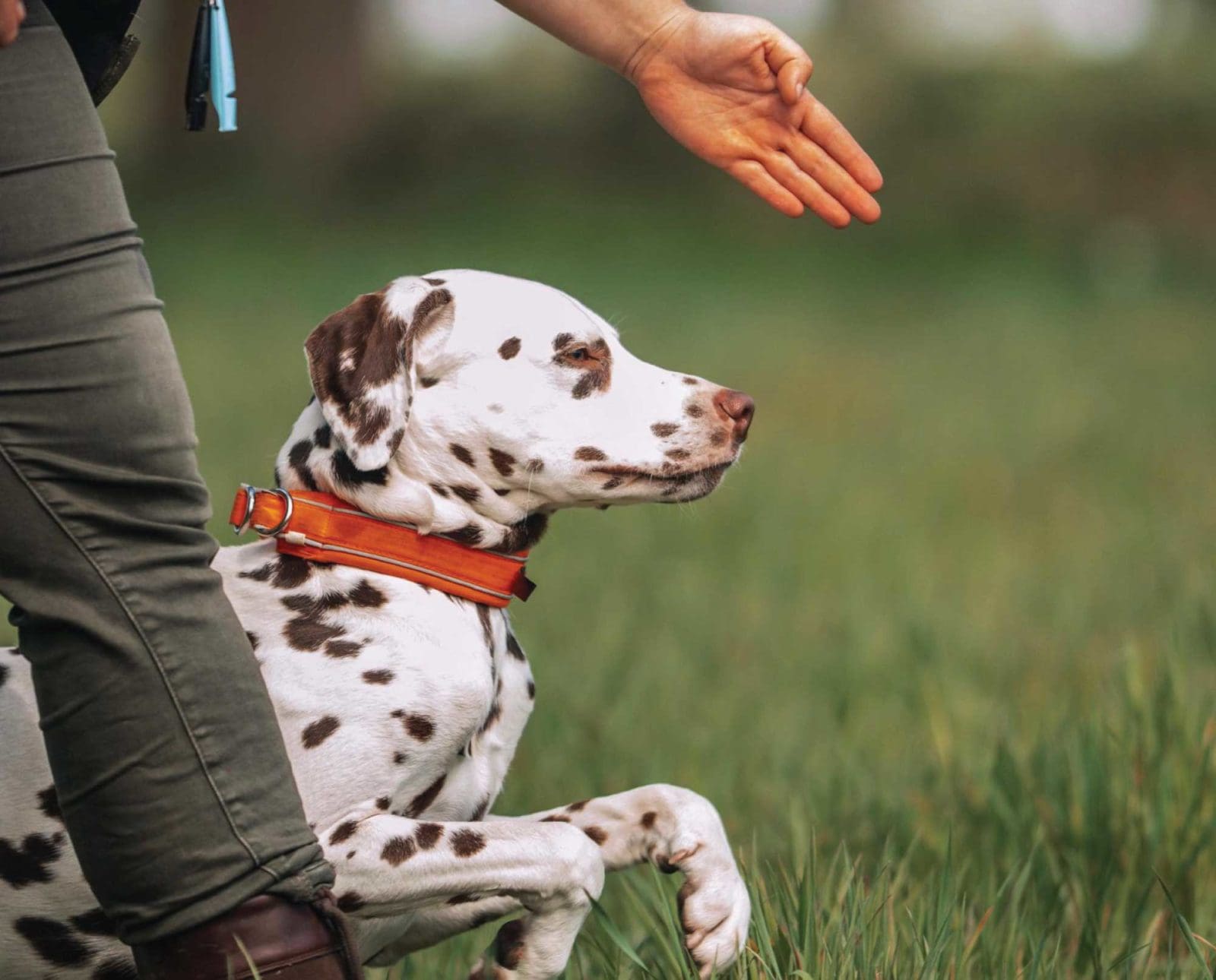
Auna Kaufmann is the Field coordinator for Wyoming Wildlife Federation.…
Setting the record on common myths and misunderstandings around purebred dogs, dog breeding, and populations
We have selected sighthounds that can bring down gazelles in the deserts of the Middle East at 35 miles per hour, retrievers that can battle the seas of Maine, and pointers that will slam to a halt to indicate where game can be found rather than taking it for themselves.
Listen to more articles on Apple | Google | Spotify | Audible
Anyone in the dog world has heard terminology thrown around about breeding, genetics, and the way breeding decisions affect breed populations as a whole. Coefficient of inbreeding (COI), line breeding, outcrossing, purebreds, mixed breeds, mutts, genetic diversity, health testing, color genetics, and heritable diseases are all hot topics, but what do these terms really mean? Do people in the dog world understand how to accurately use these terms? How has the dog world co-opted terms and misunderstood the scientific concepts behind genetics? Do we really understand how genes work within a population?
As a trained ecologist and breed history enthusiast, I often see the dog world misunderstanding how genetics work. My background in ecology has helped me to better understand genetics and population dynamics (the study of how genetics function within populations), while my fascination with breed history has led me to become increasingly interested in and puzzled by the misunderstandings that are pervasive among dog owners around genetics, breeding, and the way that artificial or natural selection affects the dogs we live with and love.
What is Selection?
Charles Darwin is widely credited with the proposition of natural selection as the main mechanism driving the evolution of species. Darwin’s love of hunting dog breeds is less commonly known, but beginning with the acquisition of his first pointer while studying at Cambridge, his love of dogs heavily motivated his scientific pursuits. Observing the selected traits in hunting dogs and how they were passed along to successive generations was an important influence in his study of the heritability and evolution of not only physical traits, but instincts as well.
In wild animals, natural selection is the driving force behind evolution. The conditions of the environment—availability of food, prevalence of disease, and the preferences of mates—affects which individuals in a population reproduce successfully and pass on their genes. Ecologists call the process that determines which genes get passed on selection. When the environment drives selection, we call that natural selection. The result is that certain genes are passed on to the next generation more often than others, which eventually alters the overall population. In the hunting dog world, we all understand that selection is the baseline of all breeding practices. We have selected sighthounds that can bring down gazelles in the deserts of the Middle East at 35 miles per hour, retrievers that can battle the seas of Maine, and pointers that will slam to a halt to indicate where game can be found rather than taking it for themselves. All the traits we selectively breed for—color, size, speed, coat type, retrieving, pointing, and tracking—we are selecting for via artificial selection.
READ: Breaking Down 38 Pointing Dog Breeds
I rarely hear the dog world differentiate between artificial and natural selection, and I think that’s often where some of the misunderstandings about canine population genetics start to bleed into the way the general public talks about dogs. They’re talked about as if they’re two totally different things, as if breeding is at odds with natural selection. I know I’ve had a myriad of conversations with friends and family beginning with, “Well, it’s fine to want a purebred for a job, I guess, but I like mutts because natural selection makes them healthier.” But does it?
In his 1869 book On the Origin of Species, Darwin writes, “This preservation of favorable variations and the destruction of injurious variations, I call Natural Selection, or the Survival of the Fittest. Variations neither useful nor injurious would not be affected by natural selection and would be left a fluctuating element.”
What is often lost in the public’s understanding about population genetics is that last sentence. Darwin describes there what we now call no selection.
In order for natural selection to actually produce healthier dogs, two things need to be occurring:
- Traits need to actually be either helpful enough to make an animal better at reproducing than others in the population, or they must be detrimental enough to make an animal worse at reproducing than others in the population.
- Environmental constraints must be affecting the animals in question. This means they are not receiving medical care, supplemental feeding, protection from the elements, or other aspects of human intervention that would skew the traits that are “naturally” advantageous.
The important part is that it’s all about an animal’s reproductive success. For some groups of dogs, like landraces and village dogs, natural selection is certainly still affecting populations every day. Dogs are free-roaming or feral, forage for their own food, and find their own shelter. Many even form packs and hunt in groups. Those are the situations in which natural selection does have the chance to select for better health, though it may also select for traits that are less desirable in a pet dog such as independence from people, aloofness, or skittishness.
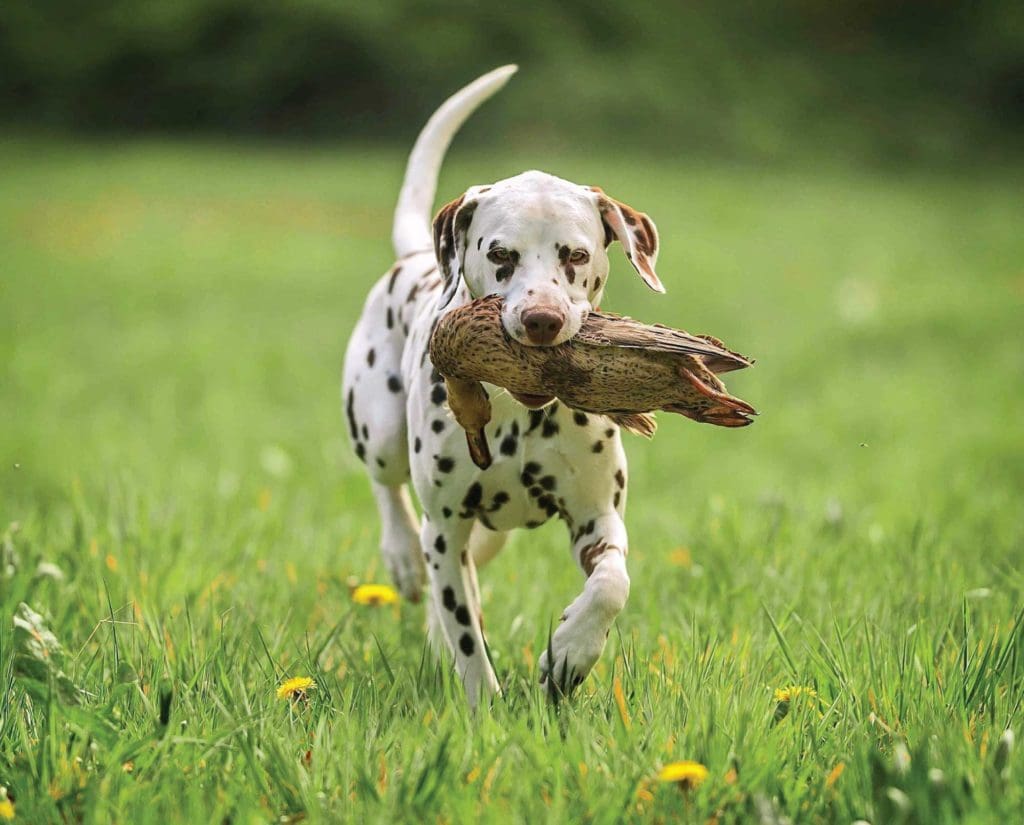
However, in the vast majority of North American mutts who receive enough medical care, food, and basic shelter to keep them healthy enough to reproduce, natural selection will not be at play. Whether or not a dog has hip dysplasia, an unstable temperament, or other undesirable heritable traits is irrelevant if there is no pressure selecting against them. These individuals can still reproduce. What is actually happening in most cases of the breeding of mixed breeds in North America is effectively no selection, meaning that neither natural or artificial selection is truly driving what genes pass on to the next generation. In most cases, it simply depends on whether or not owners decide to (or accidentally) allow a dog to reproduce.
What Does “Genetic Diversity” Mean?
Contrary to popular belief, genetic diversity does not refer to the diversity in an animal’s pedigree, at least, not in the scientific sense. Genetic diversity refers to how much variation is present in the genetic material of a breeding population and does not refer to an individual at all. Any distinct population will have genetic diversity, and the genetic diversity of any population exists on a spectrum of low to high.
Populations with low genetic diversity will often have significant uniformity. Distinct breeds of dogs are examples of populations with lower genetic diversity because they have been selectively bred for specific traits over many generations, weeding out traits that were deemed undesirable. Populations with higher genetic diversity will show more significant variation, such as a free-roaming population of stray dogs in a large city.
Genetic diversity provides the building blocks for selection to act. For natural selection, it provides a number of traits that will perform differently in a given environment. A population of dogs consisting of 50% longhaired dogs and 50% shorthaired dogs dropped into a tropical climate may show an increase in the proportion of shorthaired dogs over time, as the shorthaired dogs stay healthier and reproduce more successfully, while the same population dropped into the arctic may see the opposite. In both cases, the presence of variation provided the building blocks for selection to push the population in one direction or another.
This is not to say that high genetic diversity is always good and lower genetic diversity is always bad. High genetic diversity, especially in cases where selection is not acting, will continue to produce highly variable, unpredictable traits. When we’re breeding livestock or companion animals for a specific purpose, whether that’s dairy or meat production, egg laying, herding, guarding, bird hunting, or companionship, a measure of predictability is desired and necessary. That’s where artificial selection begins with breeding, which is essentially systematically lowering the genetic diversity of a population until it consistently “breeds true,” or produces most of the desired traits and avoids most of the less desired ones.
Genetic diversity provides the building blocks for selection to act.
Coefficient of Inbreeding, Line Breeding, and Inbreeding Depression in Dogs
My dad has a tongue in cheek saying about animal breeding: “Purebred is inbred.” To an extent, he isn’t wrong. You see a lot of breeding announcements with an advertised “coefficient of inbreeding” that’s sometimes devised mathematically by comparing the pedigrees of the dogs or sometimes determined genetically with tests like Embark. Coefficient of inbreeding (COI) is a measure of the likelihood that two inherited alleles at a locus are identical due to common descent, or in plain English, how likely it is that a dog will inherit a gene from mom that is identical to the inherited gene from dad because somewhere, way back in their pedigrees, that gene was passed down to mom and dad from the same place.
The average COI among all purebred dogs is approximately 20%, which happens to be my Brittany’s genetic COI according to her Embark DNA test, but it varies widely between breeds. As we discussed earlier, genetic diversity is a trait that populations have, whereas COI is a trait of an individual. When someone says that an individual dog is “genetically diverse,” what they often mean is that they have a low COI, indicating a varied genetic background.
I’m sure you hear phrases like “hybrid vigor” thrown around all the time. Family members tell you that purebred dogs are unhealthy because they’re all inbred, but mutts have “hybrid vigor.” This is not, scientifically speaking, true. Hybrid vigor is actually a scientific term that refers to the mixing of two different species and the fact that it often results in larger, stronger, or healthier individuals, such as the mule. True hybridization also often results in decreased fertility or sterility. As all dogs are the same species, true “hybrid vigor” doesn’t really apply. But even if hybrid vigor is not at play, isn’t inbreeding invariably bad?
Dog and livestock breeders have been “line breeding,” or breeding related individuals to each other to set type or strengthen traits, for hundreds, if not thousands, of years. Breeders will say “if the dogs are closely related, it’s line breeding, but if they’re more closely related, it’s inbreeding,” but there’s really no scientific distinction between the two. So where is the line? What are the benefits and drawbacks? And how do they tie into genetic diversity and artificial selection?
To begin to delve into it, we have to remember the ultimate purpose of creating purebred dogs: to develop animals with specific, predictable, desirable traits. In hunting dogs that often means selecting specific drives, temperaments, sizes, and coat types. In order to do that, we select dogs that display the traits that we want and then we breed them to other dogs that also have those traits, hopefully producing puppies that carry the genes that produced those traits in the parents. When you artificially select for traits in this fashion for long enough, you begin to reduce the genetic diversity of the entire breeding population. This is not inherently a bad thing; that reduction in genetic diversity is what leads to predictability, after all. It’s the reason that retrievers almost always love to retrieve, that Irish Setters all have their beautiful mahogany coat, and that Greyhounds boast unique blood chemistry that enables their incredible bursts of speed. However, as much of a breed history and preservation enthusiast as I am, I would be remiss not to address the very real consequences that extensive inbreeding can have.
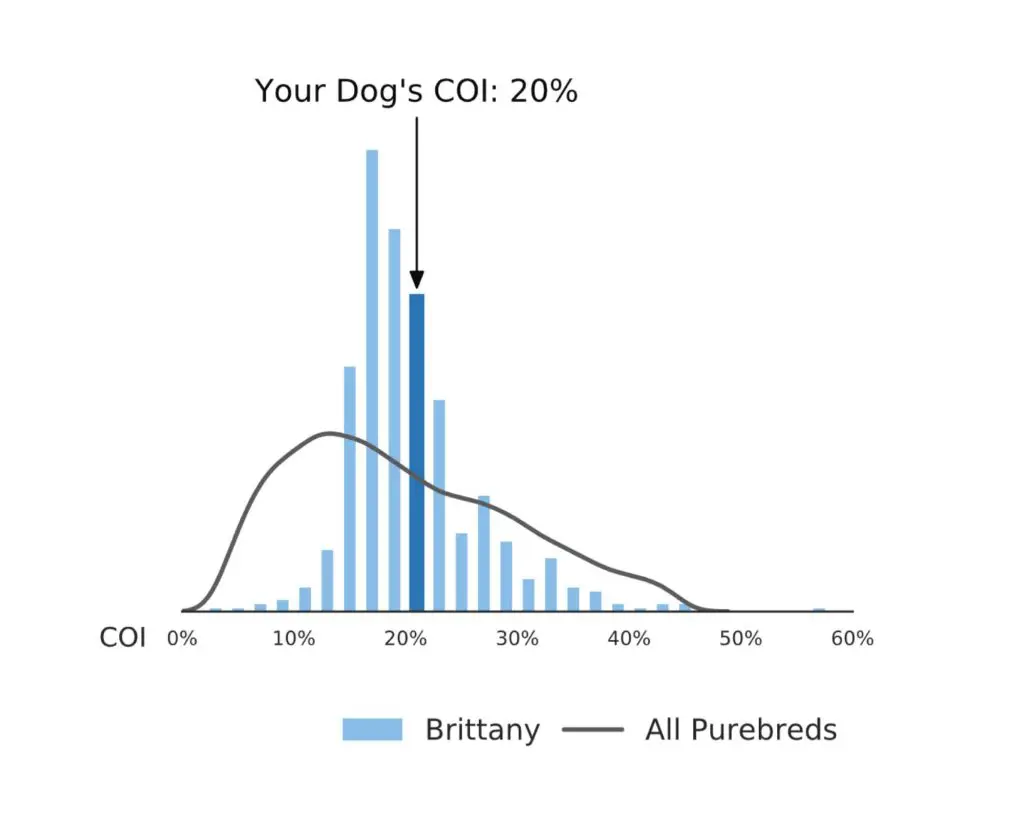
When we reduce the genetic diversity of a breeding population, we not only weed out undesirable visible traits, we lose other, less visible genes as well. Sometimes genes we select for can be tied to less obvious traits without us knowing it. During the development of many of today’s breeds, humans had only a rudimentary understanding of genetics. We could figure out coat colors and textures, size, even how to select a dog that shows more aptitude to point or retrieve. We did not, however, understand the complex inheritance patterns of joint development, urinary tract function, epilepsy, or a myriad of other potential health concerns. As genetic diversity is reduced, both desirable and undesirable genes tend to express more frequently because their frequency within the population rises, leading to increased instances of heritable disease and reduced fertility. Eventually, it can spell the end of a closed population. This phenomenon is known in the study of population dynamics as inbreeding depression.
Dog Breeding Population Dynamics inn the Real World
A particularly concrete example of a deleterious effect of inbreeding is the Dalmatian: until recently, all Dalmatians had two recessive copies of a mutated exon 5 of the SLC2A9 gene, which caused urinary tract issues, including kidney problems and bladder stones from abnormally high levels of uric acid. This gene was not selected for on purpose; it simply increased in frequency in the population as breeders selected for other traits, as it is located near the gene that produces the distinctive spotting of the breed. As breeders selected for rounder and more pronounced spotting, the frequency of the mutated gene increased. The mutated version of the gene is recessive, so carriers were non-symptomatic, and it was difficult to know which dogs were carriers without the genetic testing available now. Eventually the mutated gene was the only version left in the population and all dalmatians were “high uric acid” producers, also known as “HUA.”
Luckily, with proper diet and hydration, affected dogs are still able to live happy, healthy lives, and even more luckily, the simple recessive inheritance pattern made it possible to undertake an outcross project to reintroduce the unmutated version of the gene. As a simple recessive, a dog will be unaffected by the mutated gene if it carries one copy of the normal gene, which is dominant. Supported by the Dalmatian Club of America (though not without its opponents), a breeder backcrossed Dalmatians to approved Pointers, bred them back to Dalmatians, and eventually registered the resulting puppies as Dalmatians in order to reintroduce the “low uric acid” or normal “LUA” version of SLC2A9. For much of the project, which began in the 1970s, it was impossible to know if a LUA Dalmatian was a carrier of the gene mutation or had two normal copies of the gene. However, in 2006, researchers at UC Davis found the loci of the gene, allowing breeders to begin to DNA test. Today, LUA Dalmatians are able to be bred to HUA dalmatians to continue to increase the frequency of the normal gene within the breed, and LUA puppies can be genetically tested to determine if they are carriers.
Not all health concerns are possible to breed away from as easily as HUA. Epilepsy’s causes and presentations are so varied that it is nearly impossible to predict before it becomes symptomatic. Other health concerns such as degenerative myelopathy (DM), intervertebral disc disease (IVDD), elbow dysplasia, and of course, hip dysplasia, have genetic or medical screenings, but may not be totally avoidable because of their complex inheritance patterns that we cannot fully control or predict.
That being said, we now have the technology, and more importantly, the knowledge, to make more informed breeding decisions than any generation before us. Breeders who care about their breed and buyers who care about their new best friend should want to take full advantage of all the information we now have at our disposal about the health and genetics of our dogs. Our beloved breeds were developed with the best information that our forebears had at their disposal, but now we have more. A thorough understanding of canine genetics and health is the next step that the dog-loving community needs to take.
Dogs are our hunting companions, our playmates, our best friends. They run tirelessly over ridges and across valleys for us; they plunge into freezing water for us, and at the end of the day, they ask, “When are we going again?” As much as we owe it to the history of our sport and our ancestors to preserve the living history in our trust, we owe it to the living creatures that walk beside us now to move forward with a new, more thorough understanding of the genetic building blocks that we’re choosing. We have the power to screen for hip dysplasia or heart anomalies that take our partners out of the field too soon. We have DNA sequencing at our fingertips that can help us guide our breeds into a healthier, longer-lived future beside us. Most importantly, we have the responsibility to utilize this knowledge to better the lives of our best friends.
Auna Kaufmann is the Field coordinator for Wyoming Wildlife Federation. In her day job, she focuses on organizing Wyoming's sporting community and advocating for science-based wildlife management. An outdoor enthusiast and bird nerd in all areas of life, she spends the rest of her time hunting with her partner and her bird dog as well as camping, backpacking, and birding in the beautiful tracts of public land across Wyoming. Auna is also a breed history nerd and dog sport enthusiast, and will be pursuing NAVHDA, AKC hunt tests, conformation shows, and dog sports with her Brittany, Waverly.




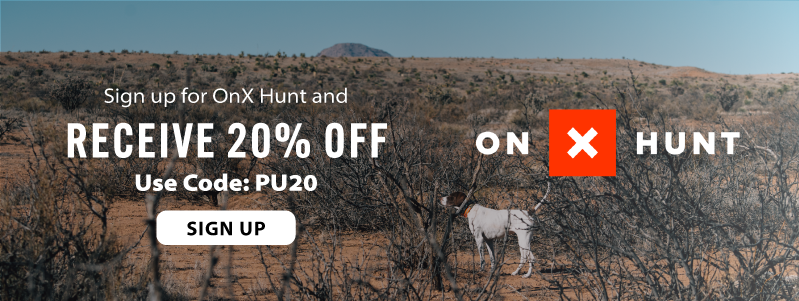
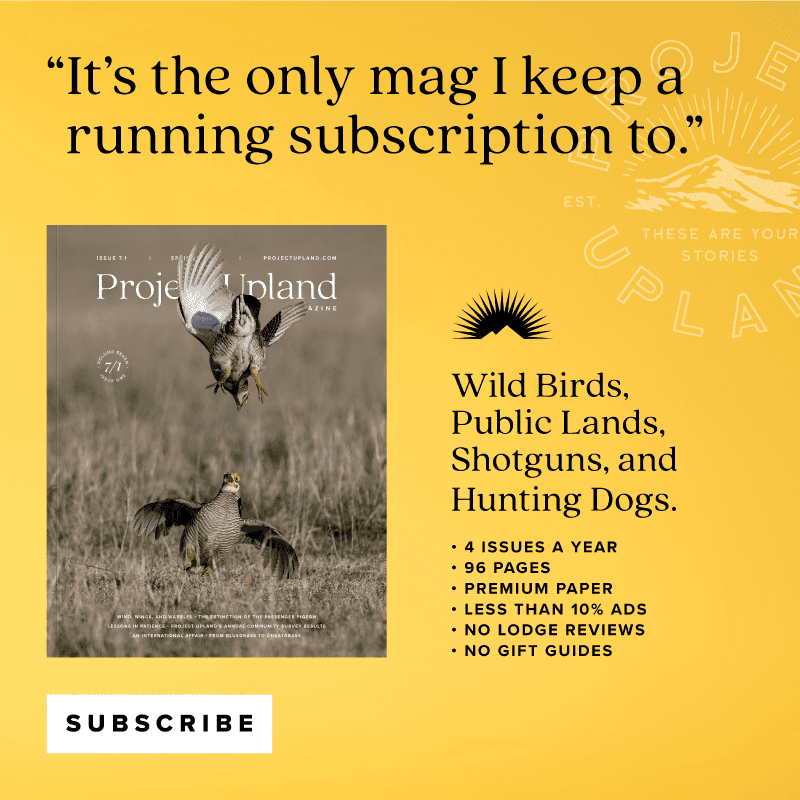
What an interesting article. I love how steeped in tradition upland hunting is. It’s one of the things that have kept me with the sport for so long. Seeing science and modern technology make its way into the sport and used in such a beneficial way is both interesting and exciting to read about!